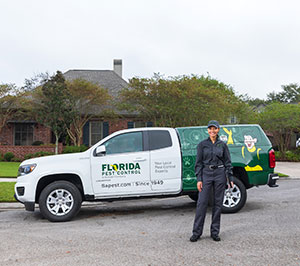Bed Insect Therapy Malfunction: Comparing Chemical Vs. Non-Chemical Solutions
In the world of pest control, especially when handling the consistent issue of bed bugs, the choice between chemical and non-chemical treatment services can be a crucial one. Both methods use distinct advantages and drawbacks, influencing elements such as performance, security considerations, and general expense. By analyzing the nuanced details of each technique, a more clear understanding of which course to seek in addressing a bed insect infestation can be acquired.
Effectiveness of Chemical Treatments
Chemical treatments for bed insect infestations have been extensively acknowledged for their powerful and quick efficiency in getting rid of these pests. When considering the effectiveness of chemical treatments, it is important to understand that they can offer a quick and complete solution to a bed bug issue.
Moreover, chemical treatments have the benefit of offering recurring impacts, suggesting that they can proceed to remove bed bugs even after the initial application. This recurring action is particularly advantageous in combating any kind of possible re-infestations. Additionally, the fast activity of chemical therapies can bring alleviation to individuals facing severe bed pest invasions, allowing them to regain control of their living rooms promptly.
Safety And Security Concerns With Chemical Solutions
One vital aspect that calls for careful consideration when utilizing chemical solutions for bed insect treatment is guaranteeing the safety of owners and the setting. While chemical therapies can be efficient in getting rid of bed insects, they might posture risks otherwise handled effectively. Among the key safety worry about chemical options is the possible damage they can trigger to human wellness. Direct exposure to specific chemicals utilized in bed pest treatments can result in respiratory system problems, skin irritation, or various other unfavorable reactions, particularly in individuals with pre-existing conditions or sensitivities. In addition, improper application or dosage of chemical pesticides can lead to harmful deposits lingering in the treated area, posturing long-lasting health threats to occupants.
Furthermore, the environmental impact of chemical services is another substantial factor to consider. Some pesticides utilized in bed pest treatments may be unsafe to beneficial pests, wildlife, and communities if they leach into the soil or water supply. It is important to utilize chemical therapies deliberately, adhering to safety and security guidelines, and thinking about less harmful alternatives to alleviate these risks and guarantee the safe and efficient management of bed insect infestations.
Advantages of Non-Chemical Techniques
Taking into consideration the prospective safety issues and environmental influence associated with chemical services for bed pest therapy, checking out non-chemical techniques provides an encouraging alternative with several distinctive benefits. Non-chemical treatments are ecologically friendly, as they do not contribute to air or water pollution, making them a lasting selection for insect control.
Furthermore, non-chemical services can be reliable in targeting bed insects, including hard-to-reach areas where chemical treatments may not permeate - A1 charlotte pest control companies. Approaches such as warm treatment, vacuuming, heavy steam cleaning, and bed mattress encasements supply complete elimination without the usage of harmful chemicals.
Limitations of Non-Chemical Treatments

In addition, non-chemical therapies usually need multiple applications to accomplish effective eradication. This can be time-consuming and may not always ensure total removal of all bed pests and their eggs, especially in covert or hard-to-reach places.
Furthermore, the success of non-chemical treatments greatly depends on correct execution and thoroughness, which can be testing for people without specialist competence. Inadequate application of non-chemical methods may cause incomplete elimination, causing relentless infestations and the need for added treatments.
As a result, while non-chemical treatments have their advantages, it is vital to recognize these restrictions and consider them when figuring out the most effective strategy for managing bed insect infestations.
Expense Comparison: Chemical Vs. Non-Chemical Options
Offered the restrictions linked with non-chemical treatments, a necessary facet to examine in the context of bed insect monitoring is the expense contrast between chemical and non-chemical options. In contrast, non-chemical therapies like warm therapy or heavy steam can be extra pricey, with expenses ranging from $1,000 to $6,000 for an entire home. While the initial price of chemical therapies might appear reduced, multiple treatments may be required to completely remove the infestation, possibly enhancing the overall expense.
Verdict

Considering the possible security problems and ecological impact associated with chemical services for bed insect treatment, exploring non-chemical techniques offers a promising Resources choice with several distinctive advantages.Given the restrictions associated with non-chemical treatments, a crucial facet to review in the context of bed bug administration is the cost contrast between chemical and non-chemical options. In comparison, non-chemical treatments like warmth therapy or heavy steam can be a lot more expensive, with expenses ranging from $1,000 to $6,000 for an more helpful hints entire home. While the first price of chemical treatments might appear lower, several therapies may be called for to completely remove the problem, potentially boosting the general expense.In final thought, when contrasting chemical and non-chemical bed insect treatment options, it is crucial to think about efficiency, safety, advantages, restrictions, and price.